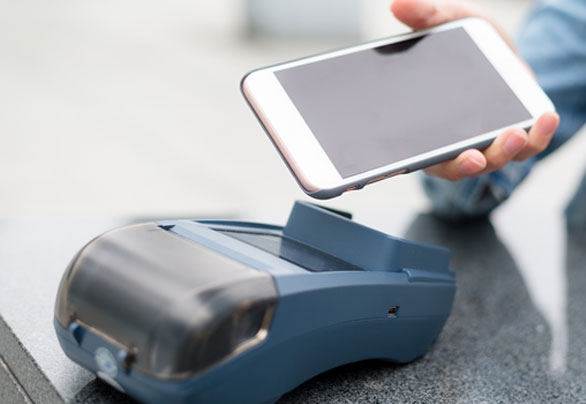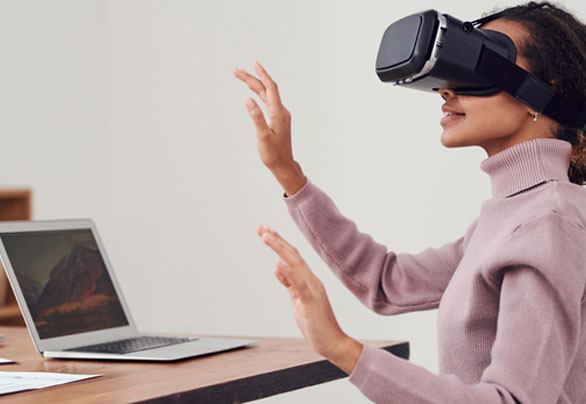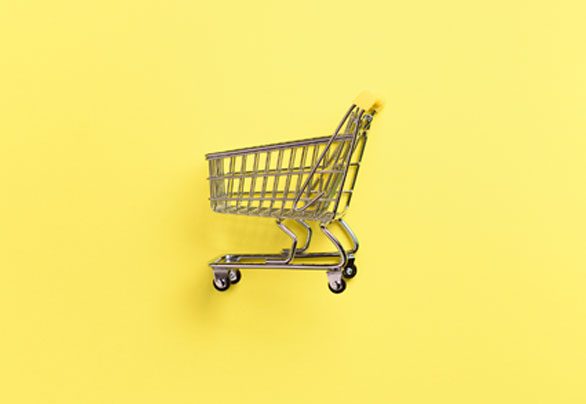


September 29, 2020
Eyes4Research
Hope and change.
Those were the two promises of America’s first black president, Barack Obama. His presidency seems like a distant memory, almost a wishful dream, even as he fought during his tenure to deliver the same hope and change promised during his time in office. Today, African Americans linger between Trump’s America and a marathon election cycle that begun with two low-polling Black individuals running for president (Kamala Harris and Cory Booker) to the current nominee – Joe Biden. Maybe Harris will help carry the torch of hope?
Hope and change seem too high to reach. Perhaps it is time for candidates and politicians to deliver on one promise: Trust.
African Americans do not trust the government. A study conducted in early February (pre-COVID) by Eyes4Research surveying more than 600 African American registered voters emphasizes this belief.
Results from this study indicate that 53% of respondents feel the country is headed in the wrong direction, while 33% feel it is moving in the right direction. 66% percent claim that presidential candidates are running only for the sake of power. Only 39% say they will vote in the 2020 presidential election. These viewpoints are prevalent even if a majority (38%) feel that their economic situation is better than it was four years ago (22% say it is worse). With this, African Americans distrust the United States government.
Why is that?
History. In addition to years of slavery and segregation, U.S. governmental entities continuously double-cross and abuse African Americans, making it seemingly impossible to erase endemic cynicism, even with an idealistic, two-term African American president.
Here are the most striking historical examples:
The development of thriving communities for African Americans tend to disappear as quickly as they emerge. This remains the case with the Greenwood District in Tulsa, Oklahoma, the wealthiest black community of the early 20th century (also known as Black Wall Street).
This American Dream for African Americans ended in 1921, after a murky, he said/she said incident between a Black shoe shiner and a white woman in an elevator led to the Black man’s arrest for sexual impropriety. This arrest triggered a massive riot by the African American community from May 31 to June 1.
The authorities came down hard on the rioters, calling in the national guard and air assault. Some reports state that 300 African Americans were killed, with thousands more injured. About 10,000 Black residents were left homeless, and 35 square blocks of the district were destroyed. Like hope and change, Black Wallstreet became a thing of memory, although more of a nightmare for survivors and descendants (even with restitution years later). Some have called the Tulsa Race Riots the single worst incident of racial violence in American history. Though the blame fell on both sides, there remains no excuse to wipe out a thriving community of taxpayers and business owners.
In 1951, Henrietta Lacks, a young mother of five, visited The Johns Hopkins Hospital — one of the few medical centers of the 1950s that treated poor African Americans. During her visit, doctors discovered a large, malignant tumor on her cervix.
Sadly, Lacks did not survive her cancer. However, doctors found that her cells were very different from others collected from individuals with cervical cancer. Instead of dying quickly, Lacks’ cells doubled almost every day. This anomaly is considered a modern science miracle.
Today, her cells help study the effects of toxins, drugs, hormones, and viruses on the growth of cancer cells without needing to experiment on human beings. Doctors have also used these cells to test the effects of radiation and poisons, study the human genome, and develop a polio vaccine.
Henrietta Lacks saved countless lives. Why is this a problem?
Until 1975, Lacks’ family was not aware of her superhuman cells. In addition to withholding information from her family, doctors took Lacks’ tissue samples during treatment without her consent, violating her privacy rights. Would this have happened if Lacks had been another skin color? Not likely, considering the egregious violation of Black patients in the Tuskegee Syphilis Study.
Between 1932 and 1972, Tuskegee University in Alabama told African Americans they were receiving free healthcare, and instead involuntarily injected them with syphilis. This study aimed to observe the natural progression of untreated syphilis. None were treated with penicillin, even after the antibiotic was successfully proven to treat the disease.
This horrible experiment ended after 40 years due to a whistleblower. Almost 400 Black men contracted syphilis and never received adequate treatment. Despite reformation in medical ethical practices, the Black population in Alabama remains scarred.
Comparable to the Waco siege of 1993, this instance of government abuse began as a standoff in 1985 between the Philadelphia police and MOVE, a Black liberation group that preached revolution and a return to a natural lifestyle. On May 13, the police department decided to bring the hammer down on the Black separatists, who remained held up in their building. Authorities evacuated the neighborhood and flooded the streets with 500 police officers. Even then, no member of the MOVE group surrendered. Threats were leveled from both sides, resulting in gunfire (all under an atmosphere of continual tears gas, smoke grenades, and water cannons). The MOVE members held steady for almost two hours, so the Philadelphia authorities did the next logical thing.
They dropped a bomb on the MOVE building. Literally.
A helicopter flew over the building and dropped Tovex TR2, a commercial explosive used to dig trenches through rock to lay pipe. This replacement for dynamite had never been employed in urban areas or even on military foes. Witnesses claimed the blast was a large, bright orange ball of fire, while experts said the temperature reached 7,200 degrees Fahrenheit.
Eleven people died from the explosion, including five children. Firefighters stood down as the MOVE building blazed, resulting in 61 nearby houses catching fire. There are reports that the police gunned down MOVE members as they fled the flaming wreckage.
As surreal as this horrible crime was against African Americans, it remains perhaps more surreal that Philadelphia mayor Wilson Goode approved this order, despite being Black himself.
It is still astounding that these events happened to American civilians, but it is not mildly surprising that African Americans are distrustful of the government. Beyond these tragedies, which many might not have heard of, many African Americans have fallen victim to a system that continually shows a lack of equality towards minority populations across the country (as shown in Eyes4Research’s police brutality study).
But African Americans do not believe they are all powerless. Eyes4Research’s study found that 68% of respondents feel that their vote makes a difference. The key is for politicians to prove their trust, champion for hope and change, and not call an airstrike when a Black community wants some justice.

September 23, 2020
Eyes4Research
The Internet of Things, also known as IoT, refers to any physical device that connects to the internet, communicating with people and other IoT-enables objects. From home appliances to fitness trackers, adding intelligence to basic objects through sensors bridges the gap between the physical and digital world, helping improve decision making and enhance user experiences.
Types of IoT
IoT applications remain extremely popular in households, enhancing comfort and convenience amongst consumers. From voice assistants such as the Amazon Echo, Google Home, and Alexa, to app-controlled appliances and fixtures, IoT technology simplifies household duties through automation and decision making support. In addition to streamlining tasks, many IoT home devices offer apps to help homeowners control and monitor objects remotely from their networked device, promoting energy efficiency and home security.
2. Wearable Tech
Wearable IoT technologies consist of a myriad of items such as fitness trackers, smartwatches, and even smart apparel. These wearable devices provide users with an array of benefits, from personalized health and wellness data to control over other IoT-enabled devices. These wearables are easily accessible, keeping consumers in control and connected to the data and services they need in real-time, optimizing decision making.
3. Smart Cities
Smart cities collect data on operations using IoT sensors to improve living conditions and solve issues correlated with urbanization. From IoT technology in traffic lights, parking meters, and garbage cans, networks of connected objects transmit data to municipalities and citizens, optimizing utilities, transportation, infrastructure, and mobility. Using IoT technologies to connect citizens to city services and infrastructure improves living conditions while promoting agility in the urbanization of communities.
Issues with IoT
Many IoT technologies are susceptible to security threats, as over-the-air vulnerabilities risk hacker attacks. Many of these security issues stem from inconsistent production standards, a lack of updates and maintenance, as well as a lack of user knowledge. These hacks may have catastrophic consequences, as users may lose access to other connected IoT devices containing personal data. To protect one’s information, it remains imperative to update IoT devices and to secure sensitive documents downloaded to the cloud.
2. Connectivity
With evolving wireless standards and dense networks of data, many IoT technologies struggle to maintain a seamless flow of information. Unreliable connectivity may complicate operations, costing the user’s time and money. Users can avoid these issues, flexible test solutions must be implemented, helping homes, businesses, and cities run smoothly.
Eyes4Research specializes in the science of panel and data collection, protecting the integrity of your data for optimal insights. Let Eyes4Research help you start your research off on the right path by visiting www.eyes4research.com.

September 22, 2020
Eyes4Research
The pandemic has transformed every facet of the consumer experience. From store capacity limits to mandatory mask mandates, retailers continue to adopt safety measures to stay afloat. With this, contactless payment methods have found their way into the mainstream, as 8 in 10 consumers have changed the way they pay to reduce contact due to COVID, according to a recent study conducted by Visa. Contactless methods range from tap-to-pay cards, smartwatch applications, and mobile wallets. As more businesses offer touchless payment options to consumers, cash may become a thing of the past.
Key Drivers of Contactless Payment
Covid-19 continues to accelerate changes in consumer behavior, as shoppers turn to contactless payment methods to prevent the spread of coronavirus through cash and terminals. According to Mastercard, contactless transactions grew twice as fast in grocery and drugstore transactions between February and March of 2020 compared to non-contactless payments. With this, a growing number of U.S. merchants are adopting no-touch payment technologies to minimize health concerns amongst shoppers.
2. Speed and Security
In addition to minimizing contact with payment terminals, tap-to-pay technologies allow for a quick and secure alternative to traditional methods. Instead of inserting or swiping a card, customers simply hover their device or card over the terminal to complete the transaction, eliminating waiting times and the need to type in a PIN. According to American Express, contactless payment methods are 53% faster than traditional credit cards and 63% faster than paying with cash. Touchless transactions are also more secure compared to traditional EMV cards, as touchless transactions do not contain the user’s name, security code, or billing data.
The Future of Contactless Payment
Though it may be years before the U.S. fully phases out the use of cash, the global contactless payment market is predicted to grow at a CAGR of 12.8% from 2020-2026, as stated by PR Newswire. To adapt to consumer preferences and create a safe transactional experience, businesses both large and small must integrate contactless payment terminals into their operations. Despite the growing need to adopt these technologies, there are several hurdles to overcome before touch-to-pay becomes ubiquitous including the high cost of integration, consumer fears over security, and transaction limitations. Despite this, the integration of touch-to-pay technologies ceases to slow down, as the future of the brick and mortar experience depends on creating a safe and efficient environment for shoppers.
Eyes4research provides its clients access to millions of consumers around the globe who are rigorously recruited and profiled to participate in a variety of research, including online surveys, IDI, Focus groups, mobile diaries, communities and more.

September 20, 2020
Eyes4Research
As hotels begin to reopen amidst the pandemic, the guest experience may never look the same. In order to maintain social distancing guidelines, many hotels are adopting new technologies to limit interactions with other guests and staff members. These hotel tech trends aim to limit human interaction, creating a safer environment for guests to stay.
Tech Trends to look for
Hotels continue to integrate contactless technology into every facet of the guest experience. Here are a few trends that are taking the hospitality industry by storm.
Waiting in line to check-in to a hotel may become a thing of the past. With the implementation of self-service kiosks, guests can complete the check-in and payment process without face-to-face interaction. This innovation comes as traveler’s become more tech-savvy, relying less on the assistance of human interaction. These kiosks may also eliminate the potential for overcrowded lobbies, keeping guests safe during the pandemic.
2. Digital Concierge
Guests may soon have all the services of the concierge at their fingertips. Hotels are now offering concierge services through in-room technology and downloadable apps to minimize human interaction. This innovative technology helps travelers make restaurant reservations, find excursions, and book transportation. This eliminates the need for human interaction, allowing guests to customize their travel experience without the middleman.
3. Robotic Cleaning and Room Service
Robots may replace humans to clean hotel rooms and perform room service tasks. Many big hotel chains such as Hitlon and Marriott are deploying robots in their establishments to create a safe guest experience during the pandemic. In addition to delivering food and toiletries to hotel rooms, robots may also assist with room cleaning. With increased cleaning procedures to prevent the spread of coronavirus, robots help limit staff member’s exposure to unclean areas while utilizing advanced sanitation technology to deep clean rooms and communal areas.
4. Mobile Device Capabilities
With smartphones becoming an integral part of our lives, mobile check-in, key cards and room service apps are simplifying the guest experience. Traveler’s no longer have to worry about arriving on time for their reservation, as hotel apps make it possible to check-in anytime, anywhere. The traditional hotel key may also be replaced by a scannable QR code,
Combining AI and human touch
Though an increasing number of hotels are embracing a contactless guest experience, the hospitality industry continues to value human interaction to enhance customer satisfaction. Finding ways to combine AI with human touch allows guests to customize their experience, as many hotels provide human assistance in addition to apps and technologies. This improves overall customer satisfaction as traveler’s can pick and choose how they want to check-in, access concierge services, and even order food. With this, human interaction in the hospitality industry is far from gone as nothing can replace a warm smile.

September 16, 2020
Eyes4Research
Many businesses are thinking inside the box, offering subscription services to consumers for a monthly or annual fee. According to Mckinsey and Company, 15% of online shoppers have signed up for a subscription service to receive products repeatedly. From razors, makeup, television shows, and even beer, the subscription e-commerce market continues to expand, taking over a myriad of product and service categories.
There are several types of subscription services available to consumers. Here are a few of the most popular models used by today’s businesses.
The subscription service business model remains popular amongst software companies, providing different payment options based on necessary features, business size, and the number of digital devices. From SaaS, IaaS, and PaaS, these pay-as-you-go plans are flexible based on the organization’s individual needs, making it easy to adjust services on a month-to-month basis as company priorities evolve.
2. Boxes
Subscription boxes are used by many retailers to provide consumers with a selection of products each month. From clothing, makeup, and even food, a majority of these subscription boxes are highly personalized to each customer’s tastes and preferences. With this, subscribers can enjoy the goods they know and love, while trying new products catered specifically to them.
3. E-commerce
Though not every e-commerce follows a subscription service model, businesses specializing in grocery and toiletry items have utilized this method of distribution to simplify shopping. In addition to e-commerce, traditional brick-and-mortar stores, such as Walmart and Target, have released subscription boxes ranging from beauty products to health and wellness items.
4. Entertainment
These subscriptions are a combination of services and e-commerce, giving consumers access to entertainment platforms for a monthly fee. Popular subscriptions such as Spotify, Netflix, Hulu, and Apple TV let subscribers choose from thousands of shows, movies, songs, and podcasts accessible from any device. Many of these services offer different types of plans, providing fewer advertisements or the ability to create multiple accounts for a higher monthly payment.
Advantages of a Subscription Business Model
By offering services or goods to subscribers at a set monthly price, businesses can better predict their monthly revenue. This helps companies make more informed decisions regarding their inventory, preventing issues with supplies. Though losing subscribers remains inevitable, automatic billing cycles eliminate revenue leaks, offering convenience and predictability to both customers and businesses.
2. Improves Customer Acquisition and Retention
Subscription services help attract customers by showcasing monthly prices, making goods appear more affordable and appealing. This also lowers the barrier for entry, allowing consumers to instantly access products or services, despite paying a greater amount over the course of their subscription. In addition to attracting subscribers, this business model promotes customer loyalty and retention as businesses have more opportunities to communicate directly with current subscribers, showing them options to upgrade their plans to improve their overall experience.
3. Marketing Opportunities
Subscription business models provide businesses with a myriad of marketing opportunities. The digital nature of these services allows companies to engage directly with customers using email, creating opportunities for upselling and cross-selling. Understanding consumer preferences helps businesses personalize campaigns to maintain and build customer loyalty.
Staying Ahead of the Competition
As a growing number of businesses offer subscription-based products and services, the market has become highly competitive. To stand out, businesses must find ways to differentiate themselves from competitors, offering exclusive features, brands, and discounts to their target audience. With this, personalization remains a key factor in attracting new customers, as potential subscribers search for the best options for their lifestyle and price range.

September 14, 2020
Eyes4Research
From stouts to sours, the popularity of craft beer has skyrocketed across the U.S. as a growing number of people try their hand at brewing. According to CraftBeer.com, American craft breweries are defined as brewers who produce 6 million barrels or less annually with less than 25% of the brewery owned or controlled by a beverage alcohol industry member. As of 2020, the North American Craft Beer Market is worth $45.03 billion and is predicted to reach $121.69 billion by the end of 2025, as stated by Market Data Forecast.
Industry Trends
With over 8,000 craft breweries across North America, many craft beer companies have adopted a direct-to-consumer sales model to stay competitive in the industry and reach customers wherever they may be. With this, craft beer subscription services have drastically increased, allowing beer enthusiasts to try beverages from all over the country for a monthly or annual fee. From small to large craft breweries, these services offer a wide variety of beers for every taste and price range.
2. Better For You Beers
The demand for low-calorie, healthier alcoholic beverages continues to rise as consumers become more mindful of the products they consume. From light beers to hard seltzers, craft breweries are adapting to new consumer preferences with a myriad of new products targeted at health-conscious consumers.
In addition to low-calorie craft beer options, many breweries are releasing lines of alcoholic seltzers for those seeking a lighter beverage option. These beverage lines have a variety of tropical flavors and blends, letting consumers choose from traditional hard seltzers, wine seltzers, cider seltzers, and more. Amidst the pandemic, this category of alcoholic beverages has shown resilience, exceeding 2019 sales every week from March to June, as reported by Nielsen.
For those who love the taste of beer but not the hangover, non-alcoholic brews may be the best option. Many craft breweries are hopping on the trend of non-alcoholic beers, as consumers look for healthier alternatives. Global Market Insights predicts the global non-alcoholic beer market to reach $25 billion by the year 2024, witnessing over 7.4% CAGR in the next 4 years. With a variety of styles and premium ingredients, non-alcoholic craft beers provide consumers with the same refreshing taste they love, without the side effects.
Hurdles of Craft Brewers
As the craft beer market becomes more saturated, breweries must find ways to differentiate themselves to stay competitive. Whether it’s using unique ingredients, offering new seasonal beverages, creating a unique taproom experience, or even drawing customer’s in with creative branding, breweries must earn their relevance to survive the crowded market.
2. The Implications of COVID-19
The pandemic has posed many issues for the craft beer industry. From the forced closure of taprooms to a national shortage of aluminum cans, breweries all over the nation are struggling to stay afloat. As concert halls, restaurants, stadiums, and bars close amidst social distancing guidelines, brewers must look for new ways to sell to consumers. Many craft breweries have adopted new methods of distribution, offering curbside pickup, beer delivery, and even reaching out to retailers to carry their products. With this, the craft breweries attempt to stay agile, quickly adapting to the ever-changing landscape of the beer industry.

September 10, 2020
Eyes4Research
Many homeowners are adopting minimalist lifestyles, downsizing from their spacious abodes to tiny homes. Tiny homes are defined as any living space, stationary or mobile, between 60-700 square feet, according to Tiny Home Lives. As an increasing number of people invest in tiny homes, Techanvio predicts the market to grow at a CAGR of 7% from 2020-2024. With this, the tiny home market shows no signs of slowing down as innovations and cost-effective designs make minimalism attainable for people from all walks of life.
Tiny homes are a great sustainable alternative to traditional houses, as they save energy, use fewer materials, and produce less waste. According to Go Downsize, tiny homes use 7% of energy compared to traditional homes. With this, many tiny homes are becoming self-sustaining, utilizing solar panels to eliminate fossil fuel dependency. In addition to needing fewer materials to construct, many tiny homes are built with recycled and sustainable components helping further reduce one’s carbon footprint. Having limited space for possessions also helps homeowners produce less waste, as they do not have as many items to throw away. With these factors combined, tiny homes can decrease a household’s ecological footprint by 45%, as reported by iPropertyManagement.
2. Affordable
Whether you build it yourself or purchase a pre-built structure, tiny homes are far less expensive than traditional real estate. At a glance, tiny homes have a higher cost per square foot than traditional homes. Despite this, tiny homes use fewer materials and help owners save on utility costs. According to iPropertyManagement, tiny homes cost less than one-fifth of what a traditional home would cost. Depending on the size and materials, tiny home structures can range from less than $10,000 to more than $170,000. In addition to low building and purchasing costs, tiny homes provide owners with numerous financial benefits. Operation Tiny Home reports that 68% of tiny homeowners do not have a mortgage, making these houses a great option for those striving for financial independence. For those that decide to finance their tiny home, mortgages are much shorter compared to a traditional home, helping owners pay off their home in under 10 years.
3. Take it With You
Tiny homes are extremely popular amongst frequent travelers, as they can be transported to numerous destinations across the country. From private lots to RV parks, tiny houses help travelers bring the comforts of home with them wherever they go. Though RVs are better for those who wish to travel often, tiny homes are the perfect option for those who are looking to move seasonally.
Getting insurance for a tiny home can be extremely difficult. Insurance agencies may cover mobile tiny homes under a personal property policy, requiring the owner to live in the home part-time. For full-time owners, insurance policies for alternative living structures may be the best option. Most of these policies do not cover towing, making mobile tiny homes a liability during transportation. RV insurance also covers tiny homes but may deny claims if the home does not fit specific requirements or have an RVIA seal.
2. Location
The location has a huge impact on the overall cost of owning a tiny home. Whether the structure is stationary or mobile, finding a place to build or park can be costly. From inspection, building, and zoning laws, many factors may drive up the price of owning a tiny home. Though rural areas tend to have more flexible laws, connecting to a utility grid can cost thousands of dollars.

September 3, 2020
Eyes4Research
Many companies have adopted methods of gamification to engage and motivate their target audience with intrinsic rewards. Gamification is the process of integrating game mechanics into non-game environments, such as websites, learning management systems, or online communities, to increase engagement through rewards such as points, badges, discounts, and gifts. By using game mechanics and dynamics, gamification provides users with feedback and proactive directives that influence audience behavior to help accomplish business goals and objectives. In addition to increasing audience participation and engagement, gamification provides useful insights that help businesses adjust the way consumers and employees interact with company platforms.
Benefits of Gamification
By implementing game-like interfaces to enhance both employee and consumer engagement, the utilization of gamification strategies provides businesses with several benefits. For one, gamification in learning management systems helps current employees and recruits retain information while learning how to best perform at their job. Gamifying onboarding processes, skill assessments, and professional development create a more interactive user experience leading to optimal engagement and improved performance.
In addition to using gamification for employee educational purposes, game dynamics and mechanics are useful to engage consumers. For online businesses, creating an interactive experience with the extrinsic motivation of coupons, free products, or early access to deals may boost sales by providing customers with the incentives needed to follow through with their purchase. Invoking reward linked loyalty programs and interactive play-to-win modules motivate consumers to participate in promotions through a fun, interactive user experience.
The Future of Gamification
As gamification continues to grow, new technologies and strategies may help further increase audience engagement. The utilization of augmented and virtual reality technologies will help create a more immersive user experience, as headsets create a sensory-rich environment to promote interactive learning. VR and AR technologies may also revolutionize the traditional shopping experience, allowing consumers to visit showrooms and sample products from any location.
As gamification continues to advance, programs may also allow for more personalization amongst users through machine learning and AI technology. By transforming user behavior and feedback into data analytics, gamified programs may better curate experiences to the user’s abilities and provide more personalized feedback to help set more specific goals. Personalization of gamification strategies may also help businesses better target consumers by customizing the brand experience to increase customer engagement and retention. With the continuing adoption of gamification strategies, interactions between companies and their target audience may improve significantly, helping businesses reach their overall objectives.
Learn more about Eyes4Research’s community management platform for research and how we use gamification to increase audience participation by visiting www.eyes4research.com.

September 3, 2020
Eyes4Research
From product shortages, increased online shopping, and cost-conscious consumers, 2020 has fundamentally changed shopping habits. In the chaos of the pandemic, private label products have surged in popularity; as consumers scrambled to find items both in-store and online. Private label product sales often fluctuate based on economic conditions, growing in popularity as the economy suffers. Despite this, unprecedented factors such as the pandemic’s effect on consumer behavior, improvements in branding, and the rise of e-commerce may create more sustainable growth in the private label products market.
So, how much has the market for private label products grown in 2020? In an article by Packaging Strategies, private label brand sales have increased by 29% from the beginning of the pandemic, compared to the 24% sales growth of regular brands. Large retailers, including Walmart, Target, Amazon, and Kroger, have continued to expand their lines of private label products amidst demand by consumers, even before the beginning of the pandemic. A study by AlixPartners discovered that 65% of US consumers tried a new brand or private label in at least one consumer product category since the coronavirus outbreak. Of these consumers, 1 in 4 who tried new products plan to stick with them, as private label market growth shows no signs of slowing down.
Key Drivers of Growth
Affordability, the need for alternatives, and a rapid increase in online shopping remain primary factors in the growing consumer preference for private label products. According to a study conducted in September of 2020 by McKinsey, almost 20% of consumers are currently buying more private label products, with the primary reason being affordability. A rise in unemployment and growing concerns over finances have caused consumers to rethink brand loyalty, pushing them towards low-cost alternatives to traditional brands. In addition to cost, product availability has also influenced consumer behaviors. A survey by Shopkick found that 69% of consumers purchase different brands if their preferred brand is unavailable. With the pandemic resulting in panic buying, shortages in essential items further increased private-label item sales. Growing concerns over in-person shopping have resulted in the growth of e-commerce. According to Oracle Retail, 61% of consumers making grocery purchases online during the pandemic. This study also found that 45% of consumers discovered new brands online and will stick with these products moving forward.
The Future of Private Label
As consumer behaviors evolve, there is one thing we know for sure; private labels are not going anywhere. RetailWire states that 60% of consumers are likely to continue to purchase private label products. With this in mind, private label brands will need to remain agile when developing and promoting their products. In a survey by FMI, 83% of retailers expect to boost private-label strategies for e-commerce in the coming year. With this, consumers can expect to see private label brands increase their online presence, venture into different product categories, and harness new consumer trends.
Looking to stay above the competition in 2021? Eyes4Research has everything you need to collect high-quality qualitative and quantitative data for impactful decision making. Learn more about our capabilities or request a demo by visiting www.eyes4research.com.